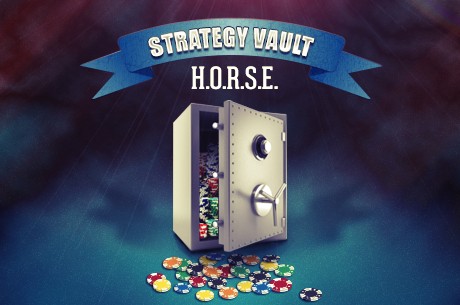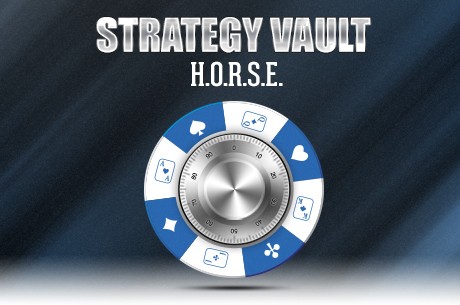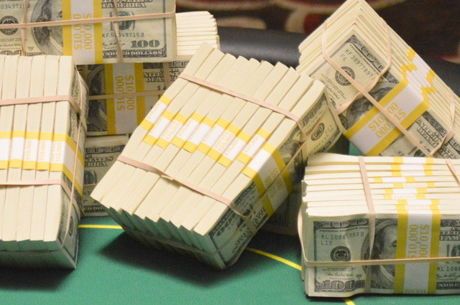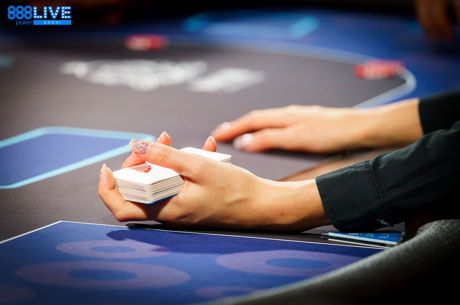Strategy Vault: Introduction to Razz

Digging deep into the PokerNews strategy archives can lead to a buried treasure, so we'll be unearthing a few gems for your viewing pleasure. In this edition of the Strategy Vault series, we'll look back at a piece from Ashley Adams about the often forgot about game of razz.
I suppose it started when one poker player or another was tired of only getting bad hands. Then, someone came up with the novel idea of letting the worst hand win for a change. Thus, razz was born.
Razz, or more formally "razzle-dazzle," is a variant of seven-card stud played for the low only. Straights and flushes don't count against you, aces are always low, and, subsequently, the best hand is the Ax2x3x4x5x, otherwise known as "the wheel."
Stud fanciers, who once eschewed razz because of its reputation as a gambling game, now often find themselves having to play it if they want to play stud at all �� both because of the demise of regular stud games and the ascendancy of rotation games like H.O.R.S.E. and dealer's choice where razz is played. Even online sites are getting into the act. Razz is offered in most virtual card rooms, both on separate tables and in mixed-game rotations.
If you want a thorough understanding of the game, you can pick uo Sklansky on Poker by David Sklanksy and Super System by Doyle Brunson. Sklansky on Poker was written in the 1980s to address the typical $15/$30 and $30/$60 games that could be found in Las Vegas at that time. It assumes that your opponents are, for the most part, at least fairly good players. By understanding all of the information in the book, about how to play on all of the streets, you will be well on your way to becoming a winning razz player in any game. Super System only has a few pages dedicated to razz, but many consider these few pages to equal the worth of hundreds of pages in any other book on the game.
You don't need to read a book or learn all of the important concepts in it to beat the typical lower-stakes games you can now find online, though, or to be good enough to come out ahead in the razz round of H.O.R.S.E. In general, this is because the level of play is pretty poor �� not universally awful, but bad enough for one to beat without being an expert. While there's no shortcut to becoming a true expert in razz, I can give you enough of the basics to help you beat most of the bad and average players that you're likely to encounter in these games.
First, you need to understand the structure of the game, and it's pretty intuitive if you understand seven-card stud.
Each player antes. In the typical $2/$4 or $3/$6 game, the ante is $0.25. The high card has an initial forced bet, which is generally $1 in games of these limits. That means that at a full table of eight players, the initial pot is $3 in both $2/$4 razz and $3/$6 razz when you include the bring-in bet.
Thereafter, the stakes proceed as in regular stud. They double on fifth street and remain doubled until the river. Take note that there is no double bet option on fourth if a pair appears.
I've found that there are at least a few players in the online games, and in the rotation games I've been in, who play incorrectly much of the time. In general, this is because they are too loose �� calling with hands that they shouldn't be playing �� and too wild �� raising with hands that they should either fold or just call with. These are not the types of mistakes by opponents that the Sklansky book anticipates with his strategy. Unlike the better, higher-level player that he addresses, I've found that I do not need much deception to beat these lower-stakes games. Rather, a simple and direct tight-aggressive strategy is sufficient.
For example, I play in games where there is often a player with a 9x or higher as their up card who will call the bring-in, and, if he has called it, will call a completion bet (an initial raise to the lower tier of betting �� raising the bring-in). For example, a player with a 10x exposed will call the $1 bring-in in a $3/$6 game and if that bet is raised to $3, he will also call along.
Similarly, in games like this it's not uncommon for players to sometimes raise on fourth or fifth street when they have the worst of it. For example, I was playing the other night and saw the following:
Player A: (XxXx) / Jx6x9x
Player B: (XxXx) / 8x7x10x
The fairly tight-aggressive Player B bet (as he should if he has two unpaired low cards in the hole), but then Player A raised. There is no good reason for the Player A to raise. It is an awful play. He probably has both the worse hand and the worse draw.
Similarly, I saw the following in a $2/$4 game on PokerStars:
Player A: (XxXx) / Ax10x2xKx
Player B: (XxXx) / 4x5x7x7x
Player A bet, Player B raised, and then Player A reraised! He should not have initiated the betting, even with a smooth ten, and when he was raised he should have thrown his hand away. Chances are, Player B already has a made seven, but in the worst case he is drawing to a much better hand than Player A.
Against players like this, a conservative strategy is the best. Don't worry about bluffing or semi-bluffing (with very few exceptions that I'll mention later). Don't worry about close calls, either. Wait until you are clearly in the lead, and then bet and raise as much as you can. Get their money in when you are clearly getting the best of it, and you'll win their money. It's as simple as that.
In future articles, I'll show you how to do that in razz.
This article was originally published on October 28, 2006.
Want to learn more about the different variants of poker? Check out the Poker Rules section here on PokerNews.
To stay on top of the poker world, follow us on Twitter and like us on Facebook.








